Are you or a loved one battling an opioid addiction? This can be a very stressful time in your life and one that is hard to share with others due to stigma. Do you understand all your options so you can form a treatment plan alongside a healthcare professional?
This guide will discuss one of the directions available to you, the use of an opioid agonist. Read on to learn what these are, how they work, and what their role in addiction therapy is.
The Medical Importance of Opioid Agonists
An opioid agonist is a prescription medication that is often used as a way to both ease pain and treat opioid use disorders. They can trigger responses in the body much like those produced by opioids, though without the same addictive qualities. For this reason, they are often used as part of several addiction treatments to help reduce the more harmful effects of withdrawal.
The drugs are a fundamental part of any serious treatment plan and can have long-term benefits over complete abstinence from any drug use.
How Opioid Agonists Work
After these drugs enter the body, they will bind to opioid receptors in the brain. This can mimic the effects of opioids without offering the same levels of euphoria one might get from opioid abuse.
As many agonists can “take the edge off,” they help to curb some of the more difficult steps in a recovery period. This enables a person to avoid compulsive use of opioids by allowing them a clearer mind. Alongside other methods, it can create an environment where a person is open to other forms of intervention.
Differences Between Opioid Antagonists and Agonists
Antagonists are another form of drug used for similar reasons. Instead of activating receptors, though, they replace any opioids bound to them. They then block the chemicals from binding further, stopping the feelings of euphoria.
Medical professionals use antagonists in emergency medical situations, usually to reverse overdoses. They often act much faster, and create a situation where someone “comes down” very fast.
Both of these drugs can exist in a treatment plan, though for very different purposes.
Types of Opioid Agonists Used in Treatment
The different types of agonists can offer a full spectrum of options when it comes to managing opioid withdrawal. As they all have different strengths and effects, it is important to understand what each of them can do. This will ensure any treatment occurs with your full comprehension of what to expect.
Methadone
This is a long-lasting opioid agonist. It is often administered in a controlled, clinical setting as part of opioid drug treatment. After its use, a doctor will check in on you regularly, to ensure they adjust any dosage to match your needs over time.
Methadone has a long history of use in therapy, and as such is well-regarded in the treatment of addiction.
Buprenorphine
This partial opioid agonist exists as a sublingual tablet or dermal patch. This ensures the discretion of the user when managing an opioid use disorder.
This drug is used for outpatients as it is often considered “safer”, allowing people to administer it themselves. It is combined with other drugs such as Naloxone, though, to prevent its misuse.
Nalbuphine
This is both an opioid agonist and antagonist in one package. The main reason to use this mixture is pain management. As such, while rarely used in opioid addiction, it does sometimes see use for this purpose.
Slow-Release Oral Morphine
This is an alternative to Methadone that is often administered when someone is unresponsive or intolerant to it. Much like Methadone, one receives it in a clinical setting, and its progress in treatment demands constant monitoring.
Suboxone Use
This drug is a mixture of Buprenorphine and Naloxone sometimes offered when there is a high likelihood of opioid misuse. One can get it via a prescription, allowing its discreet use, and allowing people to administer it themselves.
Treatment plans sometimes use Suboxone to help ease the process of recovery from opioid dependence. It does not work on its own, but as part of a holistic treatment plan, to increase its likelihood of success.
Suboxone Ingredients
As Suboxone combines both Buprenorphine and Naloxone, it has the following effects:
Buprenorphine activates small numbers of opioid receptors compared to other opioids. This can help to reduce the cravings people feel during withdrawal. As such, it can ease the treatment process and allow someone to come down slower.
Naloxone is an antagonist and can help to reverse recent overdoses. It displaces existing opioids and as such acts as a deterrent to the misuse of these chemicals. Should someone use opioids, they will not find them as effective as before, reducing their impact as a “reward”.
Why Suboxone Treatment Is Popular
By combining these two effects, Suboxone can help many of the withdrawal symptoms people feel and also curb misuse of the medication. This makes it more likely people will complete treatment in the right amount of time, making any recovery much more likely. You can also find Suboxone online through telemedicine providers like RecoveryDelivered.com.
The Role of Opioid Agonists in Treatment
Agonists are commonplace alongside steps such as:
- Counseling
- Behavioral therapy
- Group sessions
They can be a part of a holistic recovery process by offering a firm foundation on which someone can start to build up healthy habits. This is especially useful after people have struggled in the past.
This means people can do more than simply succeed at staying away from opioids for a short period. Such a complete treatment plan can start to help people both as they go through withdrawal and long into the future.
Places That Understand Opioid Agonist Use
Leveraging an opioid agonist can boost the likelihood of long-term recovery from opioid addiction. By working with the right medical professionals, the path to recovery is a much clearer journey and has a greater chance of success. This is where we come in.
Recovery Delivered can work with you to ensure we understand the situation and offer the right treatment plan. So, download our app to learn more about what we can do for you today.


